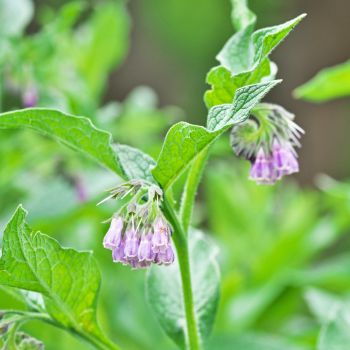In the heat of middle and late summer, basil is at its best. Thriving in hot sunny weather, each plant produces abundant dark green foliage. What is the best way to harvest and use this useful herb? Try the following tips to increase your yield of fresh basil, and get some ideas on how to use basil in interesting and delicious ways in your kitchen.

Basil tips for the Garden
Basil loves the heat, but it must be regularly watered, as it does not tolerate drying out. Basil does not mind being a bit crowded in the garden, so you can grow several plants nestled together in a small space. In the heat of summer, basil will grow prolifically, and should be regularly pinched back to encourage bushier growth. Pinch off the flowery tops along with the top several layers of leaves. Don’t make the mistake of only picking leaves, instead take the entire topmost portions, stem and all. This continual pinching back prunes the plant to a more compact shape, while encouraging additional growth. The more you pinch it back, the more abundantly basil will grow!
Harvesting
The top sections of leaves and flowers are the most aromatic and flavorful. This is very fortunate, for as you prune each plant to produce more foliage, you are also harvesting the most delicious and fragrant portions for use in your kitchen. Though you can store basil in an airtight container in the refrigerator for several days, basil is best used fresh. There are so many ways it can be used in cooking that there is almost no reason not to use it as soon as it is picked.
Start by rinsing basil leaves and then dry them thoroughly by patting with a tea towel or placing between paper towels. Once you have the leaves dry, pull the stems off and your basil is now ready to add to your favourite dish! You can use the leaves whole, chopped roughly, minced finely, or pureed with olive oil in a food processor.
Ideas for using Basil in the Kitchen:
Salads, Sauces and Garlic Bread
Basil can be added fresh and chopped into salads and sauces. It can be sprinkled atop pizza to enhance the flavor. Try an appetizer of garlic bread, to which you add thin sliced garden tomatoes, small slices of fresh mozzarella, and a sprinkling of fresh basil. Bake until the cheese is melted for a mouth watering treat.
Summer Garden Pasta
Try preparing a summer pasta from your garden. First cook the pasta of your choice. Then, for a perfectly simple and tasty dressing, heat several tablespoons of olive oil in a frypan. Add some minced garlic and let soften and brown golden. Just as the pasta is being drained, add several chopped ripe tomatoes to the oil and garlic and about a cup of fresh basil leaves, roughly chopped. Heat tomatoes and basil just to the point of being warm and softened. Then toss the pasta with the tomato and basil dressing, along with freshly grated parmesan cheese. Add salt and pepper to taste, and enjoy a simple summer pasta, fresh from your garden and bursting with flavor.

Tuna Salad
Another mouthwatering summer recipe is a fresh tuna salad. Mix canned tuna with chopped fresh tomatoes, a bit of minced red onion, chopped black olives, minced garlic and chopped basil. Layer the tuna mixture onto slices of a good crusty bread and top with cheese. Bake until the cheese is bubbly. This Mediterranean style tuna will make you wonder why you ever ate it any other way.
Pesto!
The classic way to use fresh basil is to make a pesto sauce. Pesto is a spicy and flavorful sauce that can be used as a topping for sandwiches and pizza, drizzled over bread, tossed with pasta, spooned into a baked potato, or served in a dollop on a hearty soup such as minestrone. Use it to modify heavier toppings, such as mixing it with mayonnaise which reduces overall fat and greatly enhances flavor. Pesto is often prepared in a food processor, which gives it a uniform green color and a smooth texture. Try preparing pesto in the following manner, hand chopped, which imparts a wonderful nutty and rustic texture:
Take two cups of fresh basil leaves and chop them fine. Add minced garlic, to your taste. If you love garlic you can add numerous cloves, otherwise, 1 clove is usually sufficient. Chop fine about a half cup of roasted pine nuts and add to the basil mixture. Walnuts can be substituted for pine nuts, which will give the pesto a deeper and nuttier flavor. Finely grate one cup of parmesan cheese and stir the mixture together. Now slowly add about half a cup of olive oil, a small amount at a time while stirring the mixture together, continue adding oil until you reach your desired consistency. Add salt to taste. Your pesto is now ready! Cover and store in your refrigerator. Pesto should keep for two to three weeks in the refrigerator, and for several months in the freezer.

The more that you use basil while preparing food, the more that you will grow to love it. Basil, though small and unassuming in the garden, brings a wealth of flavor and health to your kitchen. Develop the habit of picking fresh basil every day and using it liberally in your cooking.






